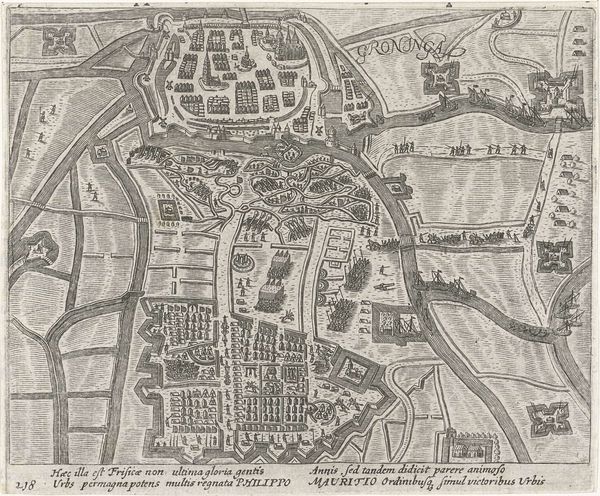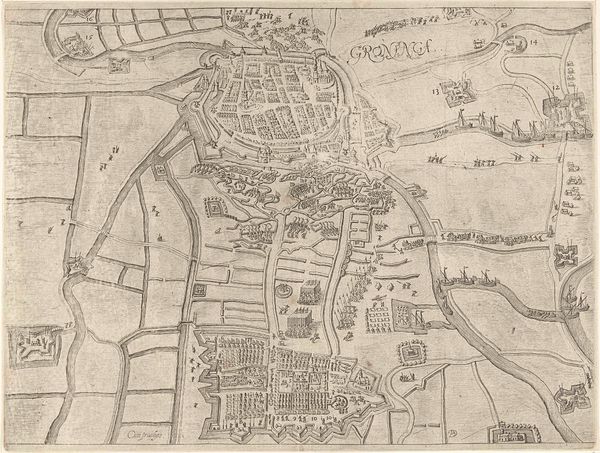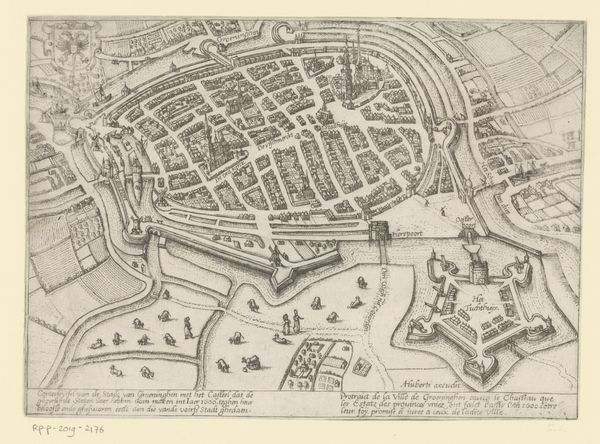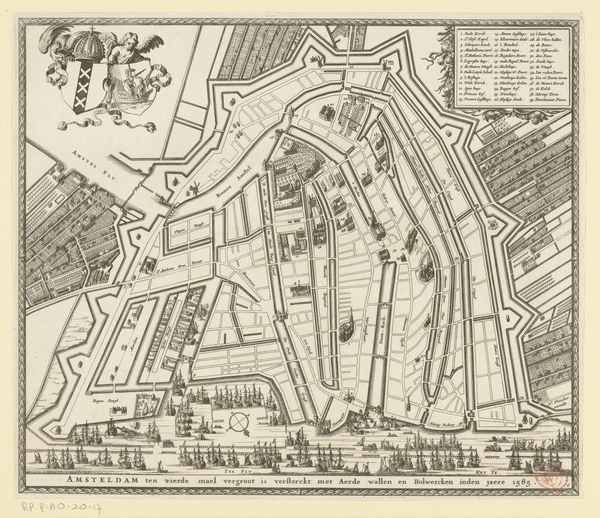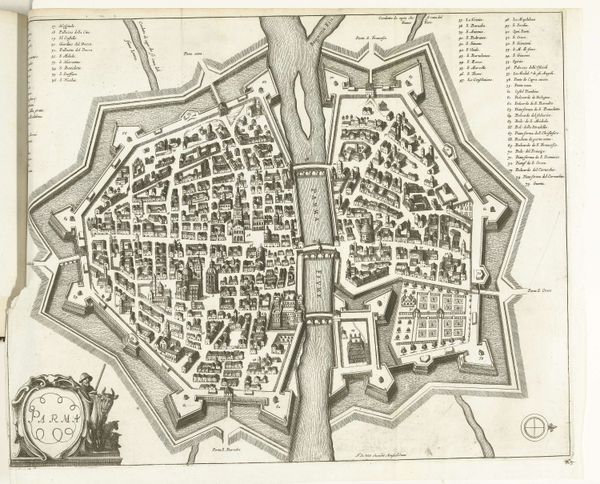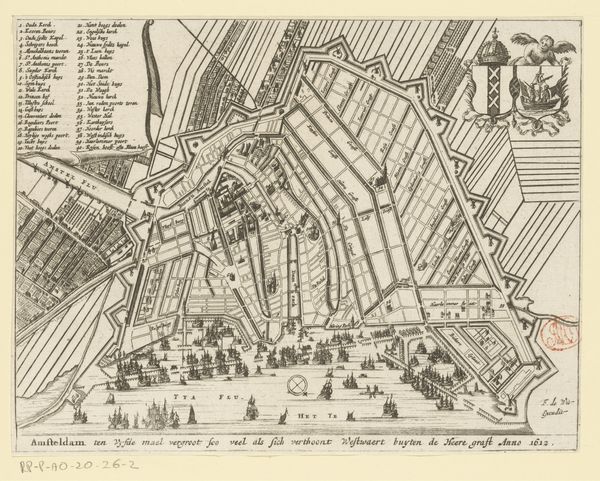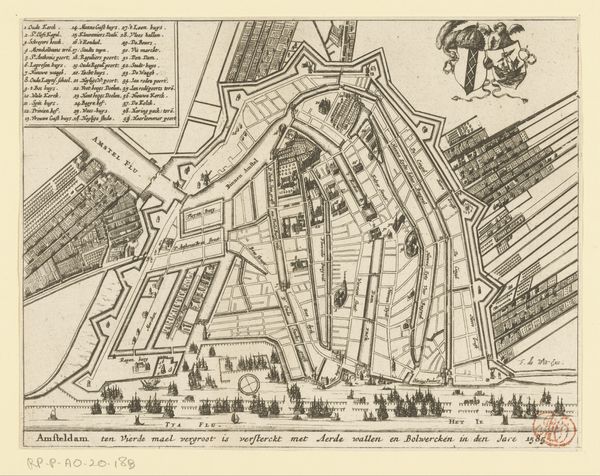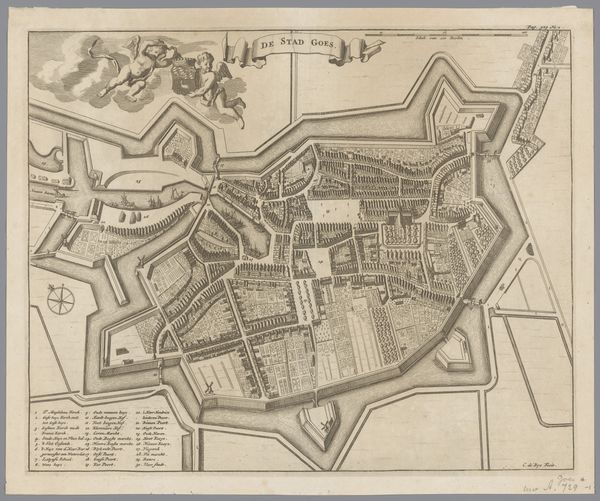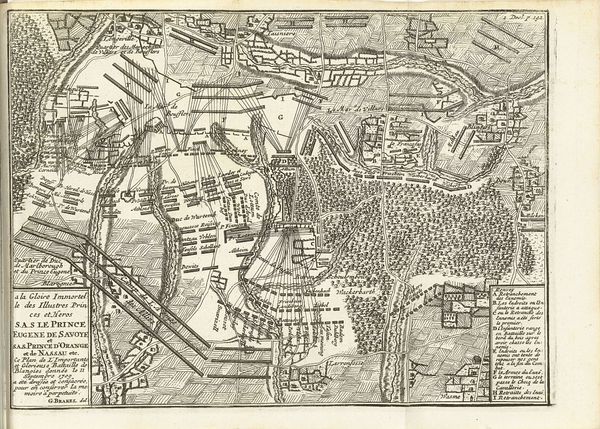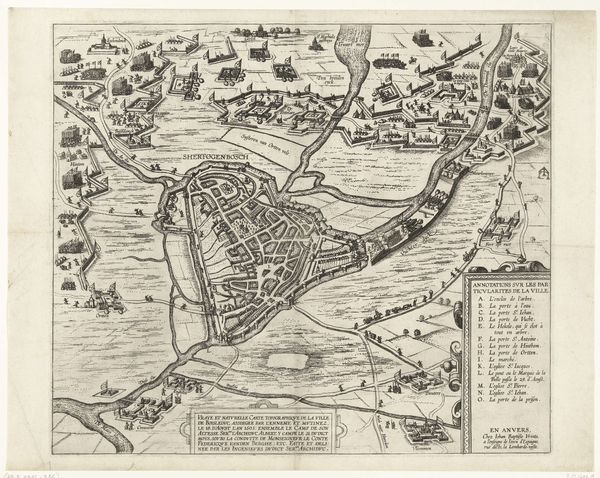
print, engraving
#
dutch-golden-age
# print
#
old engraving style
#
cityscape
#
history-painting
#
engraving
Dimensions: height 292 mm, width 333 mm
Copyright: Rijks Museum: Open Domain
Editor: Here we have "The Siege of Groningen, 1594," an engraving created around 1600-1601 by Bartholomeus Willemsz. Dolendo. It’s held at the Rijksmuseum. Looking at it, I’m immediately struck by the detailed bird's-eye view and the feeling of organized chaos it conveys. What do you see in this piece, particularly in terms of the image's lasting cultural weight? Curator: What I find fascinating about this image is how it acts as a piece of visual propaganda. The sharp lines and meticulous detail—characteristic of engravings—lend an air of authority and truthfulness. Though a representation of conflict, it’s rendered with almost scientific precision. Editor: So, it’s less about the messy reality of war and more about…control? Curator: Exactly. It presents the Dutch victory in a manner that’s both celebratory and a demonstration of power. Notice how the city is neatly mapped out, and the besieging forces are arranged with geometric clarity. This isn’t just history; it's carefully constructed cultural memory. The symbolism extends to the Latin text, too. The image insists, essentially, that divine will favored their victory, embedding the event into a narrative of righteous triumph. Editor: That makes a lot of sense. So, by showcasing the siege in this way, it solidifies the Dutch perspective on the event? Curator: Precisely. It imprints this victory within their collective identity, shaping how future generations will remember and understand the siege. What do you make of its effectiveness? Editor: Seeing it this way really highlights the power images have in shaping our understanding of history. It’s more than just a historical record; it’s an assertion of cultural values and national identity. Curator: Indeed, the enduring influence of images like this, reveals how cultural continuity and values persist.
Comments
No comments
Be the first to comment and join the conversation on the ultimate creative platform.
